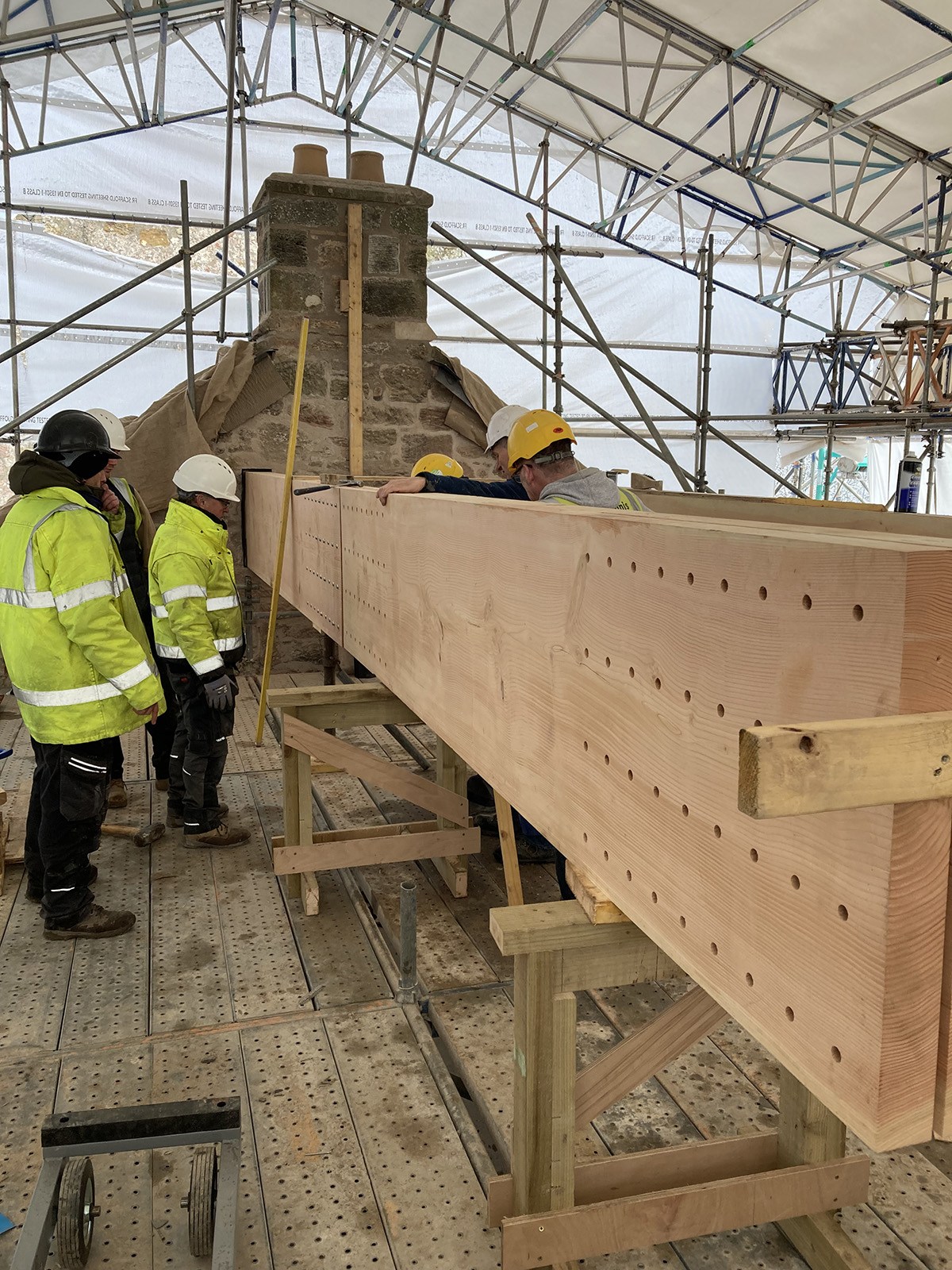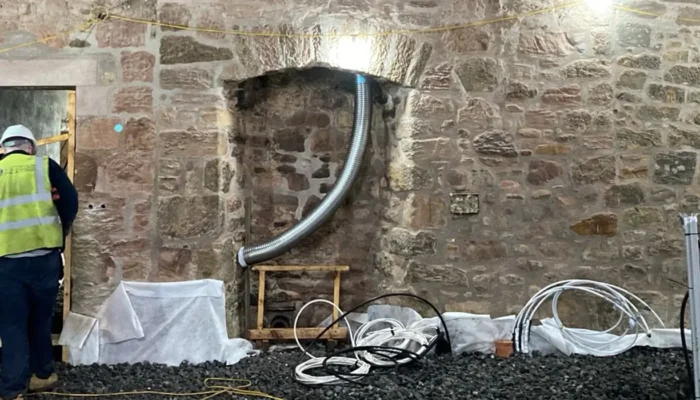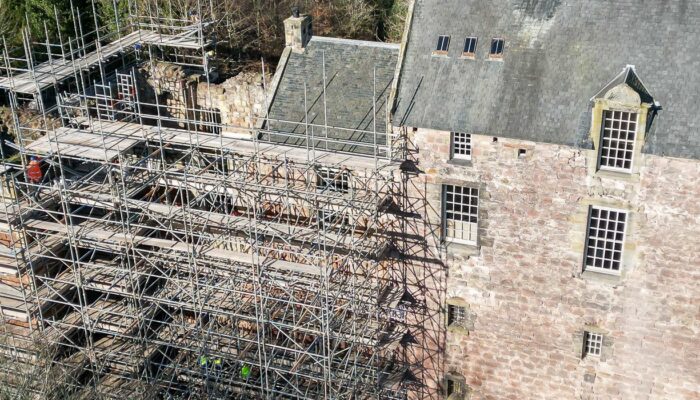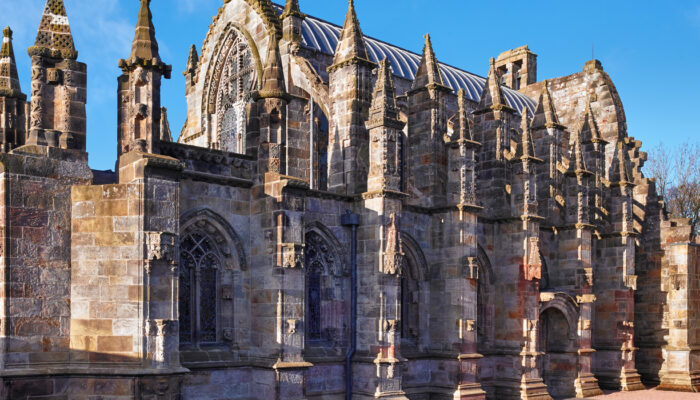
Reroofing the Great Hall
Rosslyn Castle is a Category A Listed building recognising its exceptional architectural and historic interest. Rosslyn Chapel Trust commissioned Page\Park architects to realise the vision of conserving the Great Hall and Tower and protecting the vaults below, whilst maintaining the historic character of the building.
Jonathan Walsh, of Page\Park said: ‘The conservation-led approach to the project sought to minimise any visual impact on the historic setting. Externally new elements were designed to subtly blend in with the existing form and be sympathetic to the existing materials, despite being purposefully distinguishable from the historic fabric on close inspection.

The structure of the roof
The structure of the roof is expressed internally through exposed douglas fir rafters and linings, which echo the existing roof construction elsewhere in the building. Hidden from view on arrival, on the west gable, new curtain wall glazing juxtaposes the existing stonework with a modern intervention, opening up views to the ancient woodlands surrounding the castle. From the surrounding Glen below, the new glazing offers a glimpse of a new stone fireplace used to conceal structural supports for the new roof and introduce a new focal point in the Great Hall.
New interiors were designed to be contemporary and not as a reconstruction of the historic interiors, with high quality natural materials used throughout to age well and develop patina over time. An exciting aspect of the project was the level of craft involved, to create bespoke designed elements which complement the rich material palette of materials while emphasising existing masonry carvings of exceptional significance.


Page\Park are delighted to have been involved in such a unique and historic project, providing a rare opportunity to reintegrate a ruinous part of the Castle into the habitable house that will help safeguard its future. As a reuse practice, we revel in the opportunity to combine our conservation expertise with transformative change in such challenging historic settings.’














